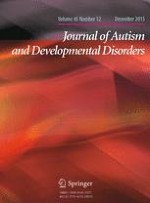17-01-2014 | Original Paper
A Virtual Joy-Stick Study of Emotional Responses and Social Motivation in Children with Autism Spectrum Disorder
Gepubliceerd in: Journal of Autism and Developmental Disorders | Uitgave 12/2015
Log in om toegang te krijgenAbstract
A new virtual reality task was employed which uses preference for interpersonal distance to social stimuli to examine social motivation and emotion perception in children with Autism Spectrum Disorders. Nineteen high function children with higher functioning Autism Spectrum Disorder (HFASD) and 23 age, gender, and IQ matched children with typical development (TD) used a joy stick to position themselves closer or further from virtual avatars while attempting to identify six emotions expressed by the avatars, happiness, fear, anger, disgust, sadness, and surprise that were expressed at different levels of intensity. The results indicated that children with HFASD displayed significantly less approach behavior to the positive happy expression than did children with TD, who displayed increases in approach behavior to higher intensities of happy expressions. Alternatively, all groups tended to withdraw from negative emotions to the same extent and there were no diagnostic group differences in accuracy of recognition of any of the six emotions. This pattern of results is consistent with theory that suggests that some children with HFASD display atypical social-approach motivation, or sensitivity to the positive reward value of positive social–emotional events. Conversely, there was little evidence that a tendency to withdraw from social–emotional stimuli, or a failure to process social emotional stimuli, was a component of social behavior task performance in this sample of children with HFASD.
